What Size Heat Pump Do I Need?
Many homeowners who are considering a heat pump installation are a bit unsure as to the most suitable size for their house.
With heat pumps being a relatively new technology, it’s hard to know precisely how big a unit is sufficient enough to heat a certain sized space
Indeed, how big or small a heat pump one needs is a commonly asked question when buying one for the first time.
There’s various factors that need to be taken into consideration to answer this question, as we explore further in the chapters below.
Article Chapters
Type of Property
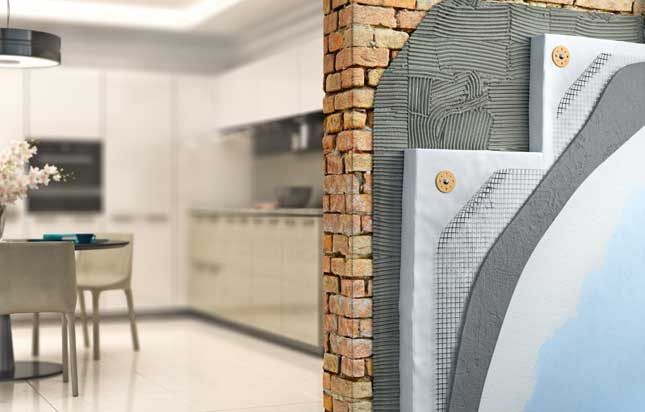
Image credit: Shutterstock
The type and age of property are key considerations.
If the property is a new build, then one can refer to the building regulations which stipulate certain levels of insulation.
During the design stage, heat loss levels can be calculated to determine the size of the heat pump to be installed.
However, it’s a bit more complicated to calculate heat loss in older homes.
A survey of the property will generally need to be carried out to ascertain the number of rooms, types of spaces and their uses, along with the insulation and heat loss.
Seasonal temperature fluctuations and the desired indoor temperature will also need to be determined.
It’s also worth noting that some rooms will need to be heated more often than others, as in the case of bathrooms and living rooms.
This will affect the heat demand of the home, and thus the size of the heat pump required.
Desired Room Temperature
The desired room temperature depends on the homeowner’s particular preferences.
Most people prefer their homes to be around a steady 21 degrees celsius.
Obviously, the lower the temperature one prefers, the smaller the heat pump required.
The difference between typical outdoor temperature and the desired indoor temperature can then be used in order to determine the total heat loss from the house, and thus opt for the most suitable heat pump size.
Flow Temperature
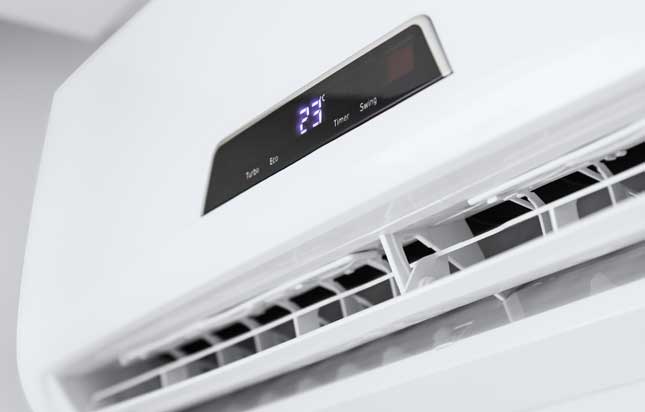
Image credit: Shutterstock
Flow temperature is a term used to refer to the temperature of the water that circulates around radiators in the house, in order for the desired room temperature to be attained.
The flow temperature will be affected by the size of the radiators and the level of insulation.
If you have underfloor heating, this will also need to be taken into account.
The smaller the heat loss, the smaller the heat pump can be.
On the other hand, if the radiators are large, the lower the flow temperature will be.
Should the radiators be too small, then the flow temperature will need to be higher in order to attain the desired consistent room temperature.
If the insulation is at a suitable standard, then a low level of heat will dissipate outside, and hence less heating will be needed to achieve the desired indoor temperature.
As you can see, there’s various factors that need to be determined in order to determine the suitable size of the heat pump.
As a general rule however, when a house is well insulated, only 1 kilowatt of heat is required to heat every 25 metres squared.
On the other hand, if the level of insulation of the property is poor, 1 kilowatt of heat will be needed for just around 10 metres squared.
A significant difference.
Type of Heat Pump
The size of the heat pump will also vary according to the type of heat pump one chooses.
Knowing if an air source vs ground source heat pump is best for your home depends on various circumstances.
The two types of heat pumps are:
- ground source heat pumps
- air source heat pumps
Ground Source Heat Pumps
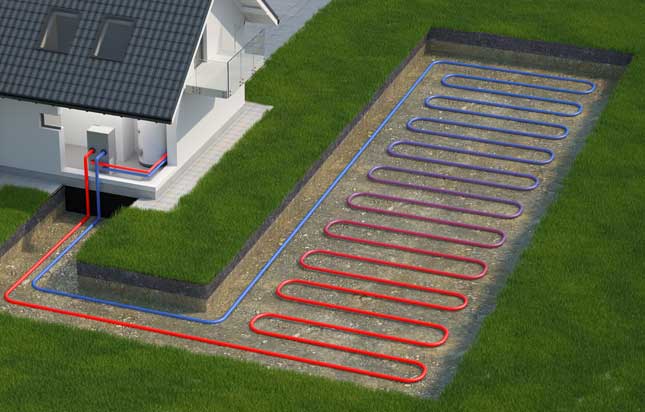
Image credit: Shutterstock
A ground source heat pump transfers heat sourced from underground outside the property into the central heating system, whether this a wall mounted heating pump, radiators, or underfloor heating.
The output of a ground source heat installation should be quite consistent throughout the year.
The amount of power that is produced by a heat pump is influenced a lot by the temperature of the energy resource, and soil temperatures are relatively steady.
As a result, the output of a ground source heat pump will not vary that much.
Air Source Heat Pumps
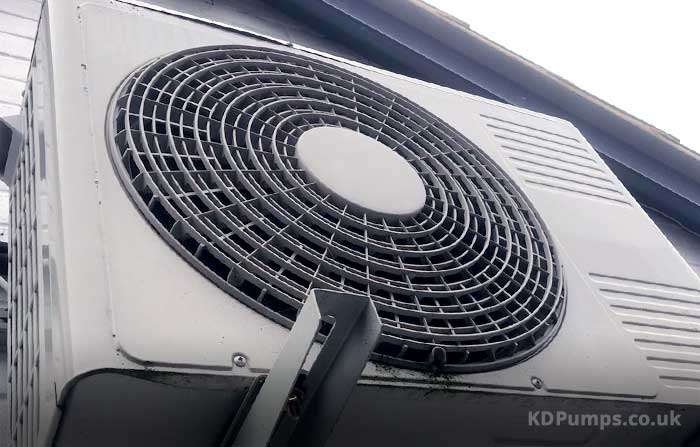
Image credit: KD Pumps
An air source heat pump absorbs heat from the outside air, and then transfers it to heat the indoors.
Unlike ground source heat pumps, air source heat pump installations experience considerable fluctuations in the resource temperature.
This is even more noteworthy in the case of exposed locations and northerly climates.
Due to this, the power output will vary a lot.
The colder the air temperature is, the less heat an air source heat pump will be capable of producing.
As a result, air source heat pumps will generally be of a larger size than ground source.
How to Calculate the Required Heat Pump Size
The output size of a heat pump is the term used to define the amount of heat energy that is provided.
This will be in kW.
The output size will be affected by the size of the property and its energy efficiency.
A property with ample insulation and double or triple glazing will be able to retain heat well, and thus a heat pump with a relatively low output level will suffice.
Generally it’s best to consult with a heat pump installation specialist to offer an estimate of the heat pump size required for your house.
This is even more important in the case of older properties and when traditional radiators are present.
A full system design will need to be prepared to calculate a suitable heat pump size for the particular property.
Naturally, this is something that only a specialist in the field will be able to do.
It’s also worth mentioning that every property has its specific requirements, and every homeowner will have their particular preferences.
How Much Space Do I Need?
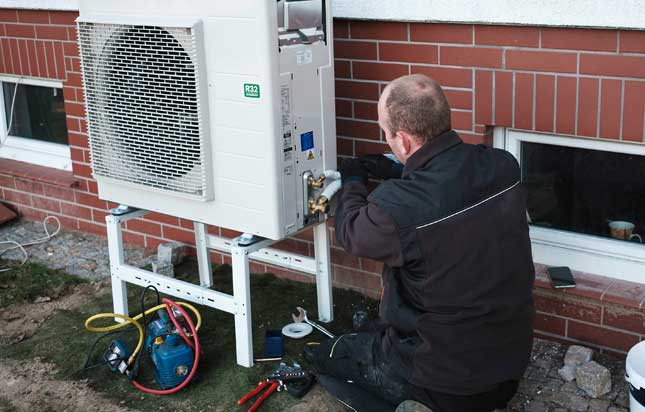
Image credit: Shutterstock
The space required will depend on:
- The type of heat pump you choose
- The size output that is required
- Whether there is an existing hot water storage tank present or not.
First of all, you’ll need to decide whether you will install a split or monobloc heat pump.
The latter will take up space outside the house, and the unit dimensions will vary according to the output of the heat pump.
To give you an idea, for a 2 or 3 bedroom house, a monobloc heat pump with an output of 5kW to 9kW will be required, and the average size of the unit would be of around 1200mm by 930mm by 370mm.
Monobloc heat pumps are preferred as long as one has sufficient space outside.
Split heat pumps will typically have relatively smaller outdoor units than monobloc ones, but you will also need to have an indoor unit.
The sizes of indoor units vary greatly.
You’ll also need to take into account whether you have the space to have a separate hot water storage tank too, if one isn’t already present.
There are split pumps with freestanding indoor units having an integrated hot water storage tank, which generally are preferred due to their dimensions.
There’s also relatively compact wall units that one can choose to install.
Conclusion
When it comes to what size heat pump do I need, there’s no one size fits all answer to this question
Various factors need to be taken into account, and as discussed there’s also personal preferences to consider as well.
That’s why it is important to seek professional advice from a heating engineer to install the heat pump of the most ideal size for your property.

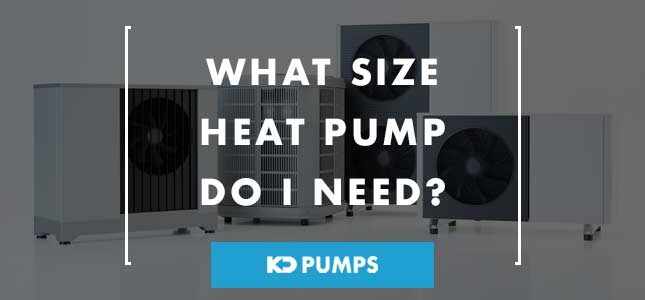
Comments are closed.